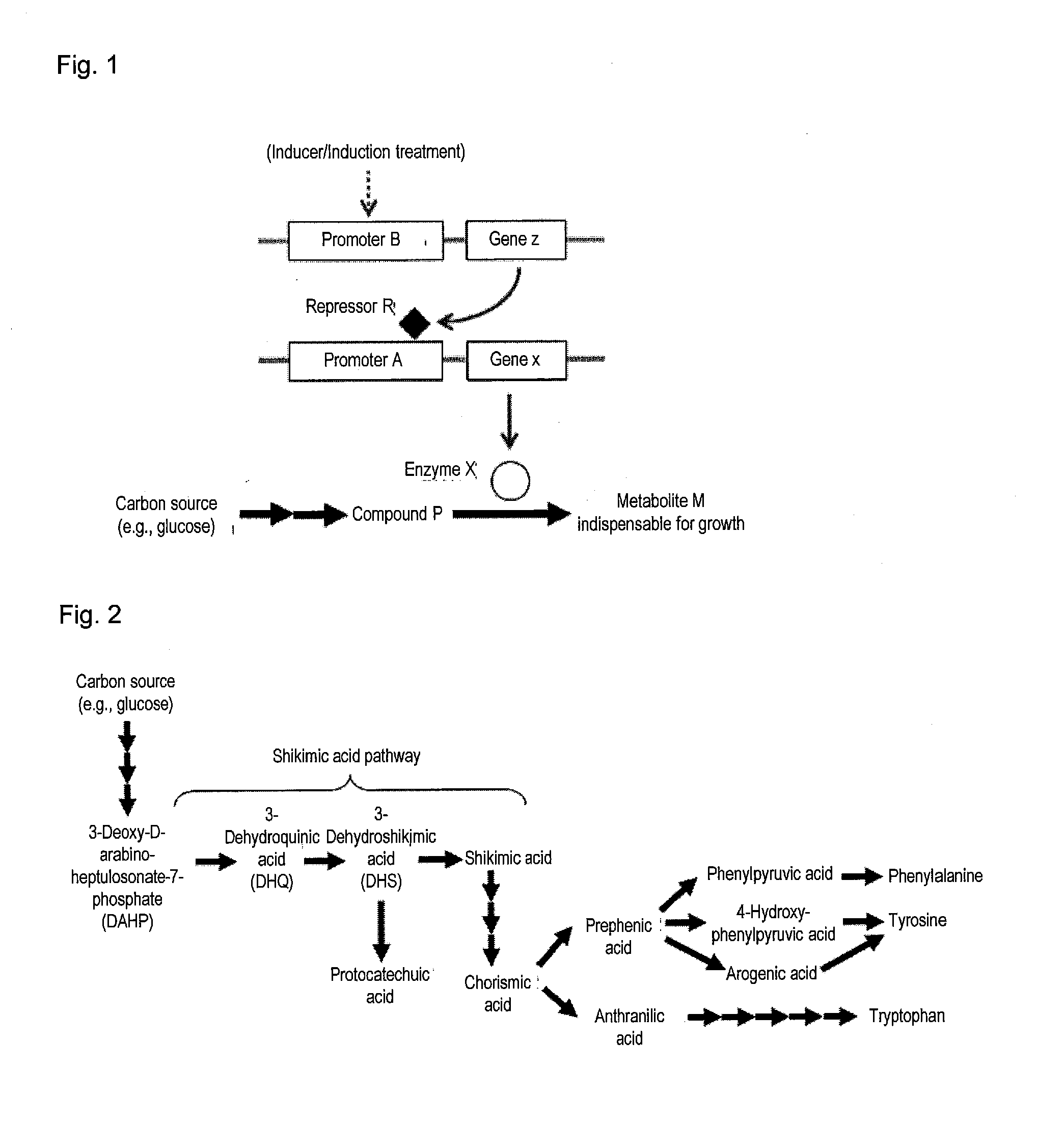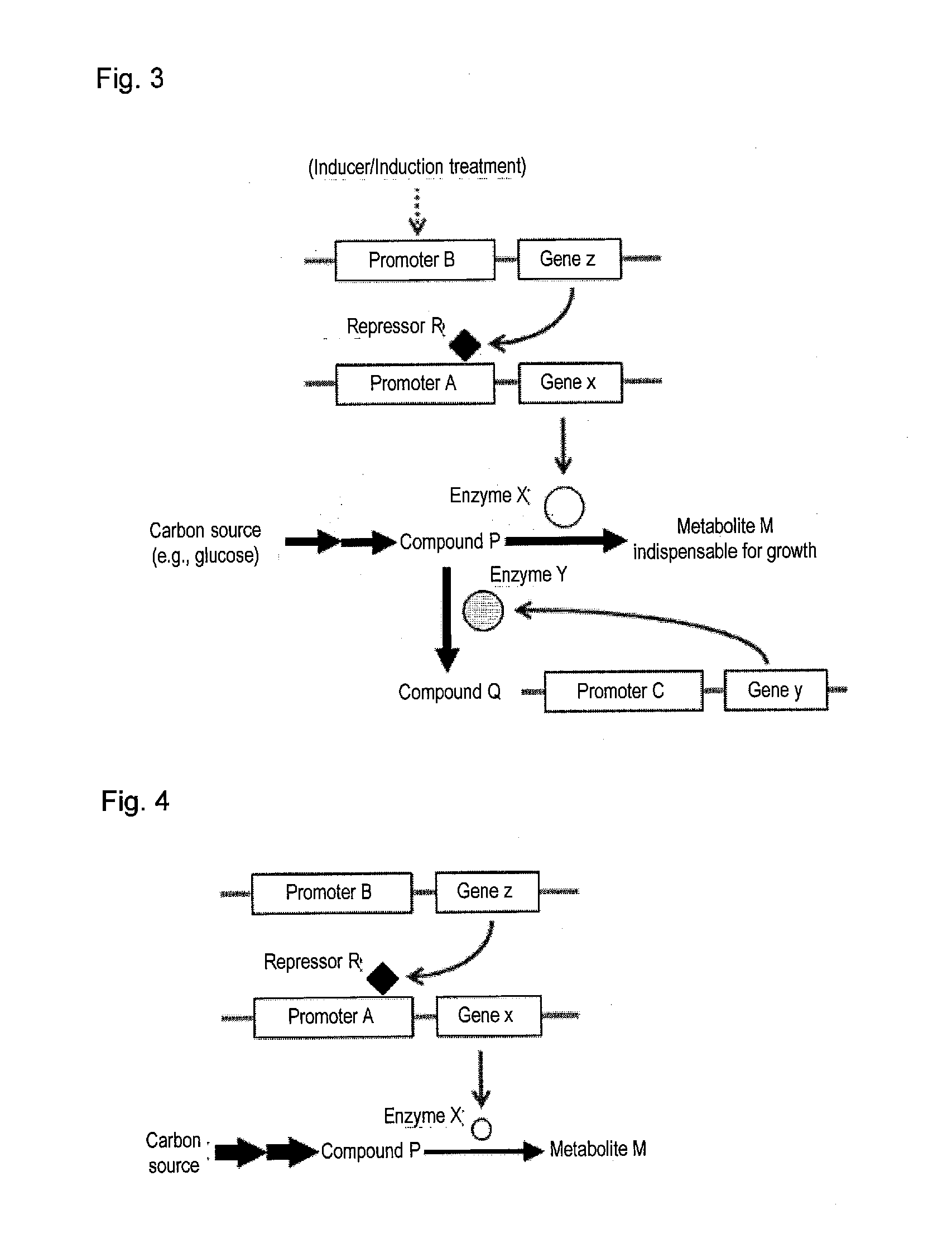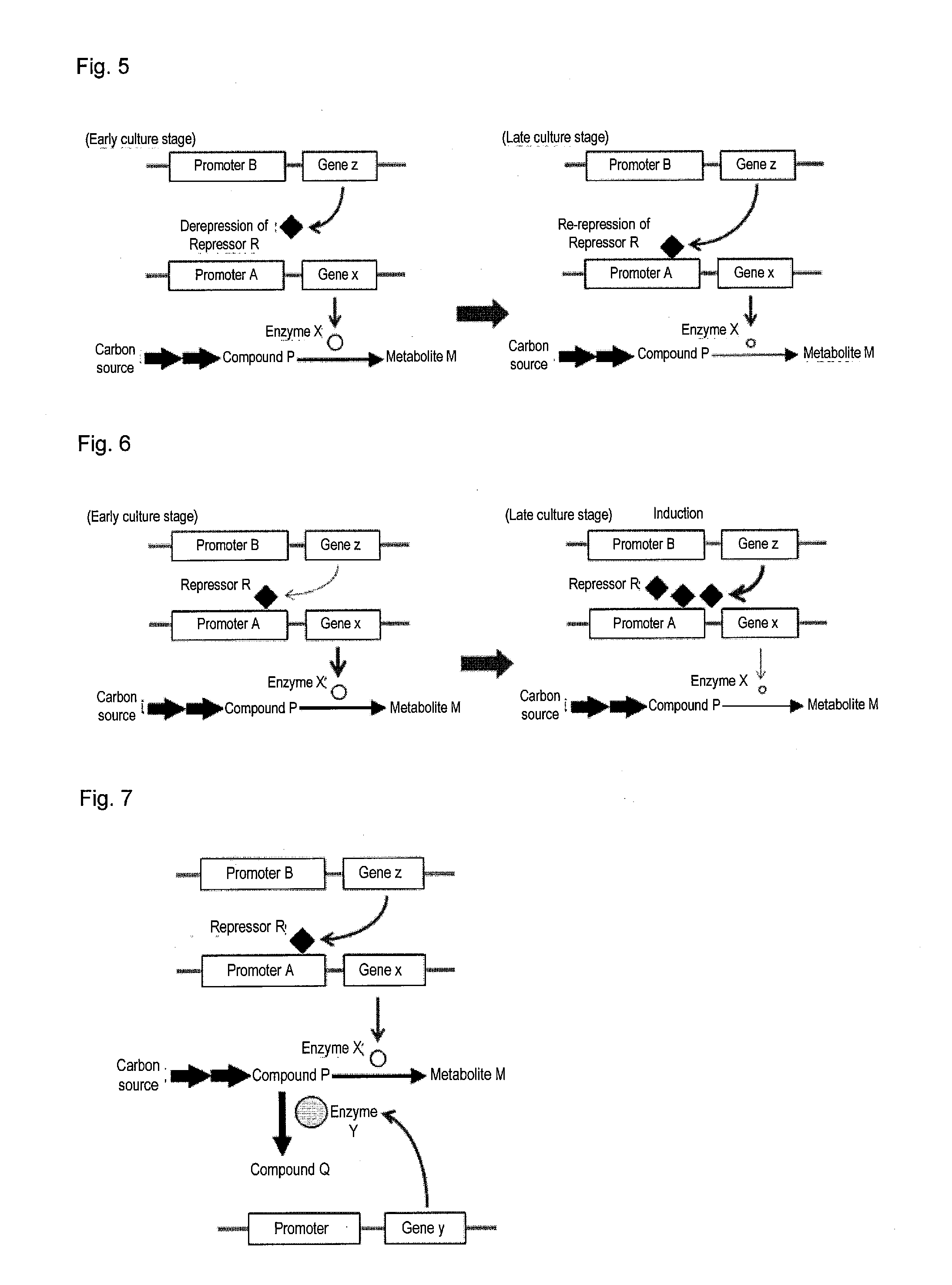Useful microorganism and method for producing substance of interest
a technology of microorganisms and substances, applied in the field of useful microorganisms and methods for producing substances of interest, can solve the problems of inability to determine the conditions for maximizing the amount of compound p produced, disadvantageous increase in production costs, and no case has been reported in which the productivity of compound p has been improved. , to achieve the effect of efficient production
- Summary
- Abstract
- Description
- Claims
- Application Information
AI Technical Summary
Benefits of technology
Problems solved by technology
Method used
Image
Examples
example 1
Comparison of DHS Productivity Between Pben-vanR Strain and NSHΔaroE3ΔqsuBΔqsuD Strain
[0158]In the manner described below, the Pben-vanR strain, which had lost the capacity for converting DHS into protocatechuic acid as a result of mutation of in-frame deletion of the qsuB gene and in which aroE3 gene expression is repressed by the VanR repressor encoded by the vanR gene located downstream of the benA promoter (i.e., Reference Example 11), and the NSHΔaroE3ΔqsuBΔqsuD strain, which had lost the capacity for converting DHS into shikimic acid and the capacity for converting DHS into protocatechuic acid as a result of mutation of in-frame deletion of the qsuB gene, the qsuD gene, and the aroE3 gene (i.e., Reference Example 10), were cultured in a 3-liter jar fermenter, and DHS productivity was tested. The amount of DHS produced by such strains is improved from that of a wild-type strain because the transcription of the 4 types of genes (i.e., aroF, aroG, aroB, and aroD genes) associated...
example 2
Production of Protocatechuic Acid Using NSHΔaroE3 Strain and NSHΔaroE3 vanE3 Strain
[0162]In the manner described below, the NSHΔaroE3 strain having a mutation of in-frame deletion in the aroE3 gene (see Reference Example 7) and the NSHΔaroE3_vanE3 strain modified therefrom in which aroE3 gene expression would be directed by the VanR repressor (see Reference Example 8) were cultured in a 3-liter jar fermenter, respectively, and the amounts of protocatechuic acid produced were compared.
[0163]The culture solution resulting from culture of these strains in the CGXII was diluted with CGXII medium so as to adjust the absorbance at 600 nm to 3.0, and 1% thereof was selectively inoculated into CGCF medium (0.9 L) in a 3-liter jar fermenter. Because of a mutation of aroE3 gene deletion, the NSHΔaroE3 strain grows very poorly in CGXII medium and CGCF medium. Thus, 50 mg / L tryptophan, 50 mg / L phenylalanine, 50 mg / L tyrosine, and 17 mg / L shikimic acid were added to these media, and culture was ...
example 3
Production of Protocatechuic Acid Using NSHΔaroE3_vanE3 Strain, NSHΔaroE3_vanE3ΔqsuB_Pben-qsuB Strain, and NSHΔaroE3_vanE3ΔqsuB_Pben-qsuB-vanR Strain
[0164]In the manner described below, the NSHΔaroE3_vanE3 strain (see Reference Example 8), the NSHΔaroE3_vanE3ΔqsuB_Pben-qsuB strain that had been modified to induce qsuB gene expression with the addition of benzoic acid (see Reference Example 12), and the NSHΔaroE3_vanE3ΔqsuB_Pben-qsuB-vanR that had been modified to induce qsuB gene and vanR gene expression with the addition of benzoic acid (see Reference Example 13) were cultured in a 3-liter jar fermenter, respectively, and the amounts of protocatechuic acid produced were compared. Regarding the NSHΔaroE3_vanE3ΔqsuB_Pben-qsuB strain, benzoic acid (final concentration: 5 mM) was added 14.5 hours after the initiation of main culture so as to induce qsuB gene expression. Regarding the NSHΔaroE3_vanE3ΔqsuB_Pben-qsuB-vanR strain, benzoic acid (final concentration: 5 mM) was added 15.5 hou...
PUM
| Property | Measurement | Unit |
|---|---|---|
| Acidity | aaaaa | aaaaa |
| Level | aaaaa | aaaaa |
Abstract
Description
Claims
Application Information
 Login to View More
Login to View More - R&D
- Intellectual Property
- Life Sciences
- Materials
- Tech Scout
- Unparalleled Data Quality
- Higher Quality Content
- 60% Fewer Hallucinations
Browse by: Latest US Patents, China's latest patents, Technical Efficacy Thesaurus, Application Domain, Technology Topic, Popular Technical Reports.
© 2025 PatSnap. All rights reserved.Legal|Privacy policy|Modern Slavery Act Transparency Statement|Sitemap|About US| Contact US: help@patsnap.com



